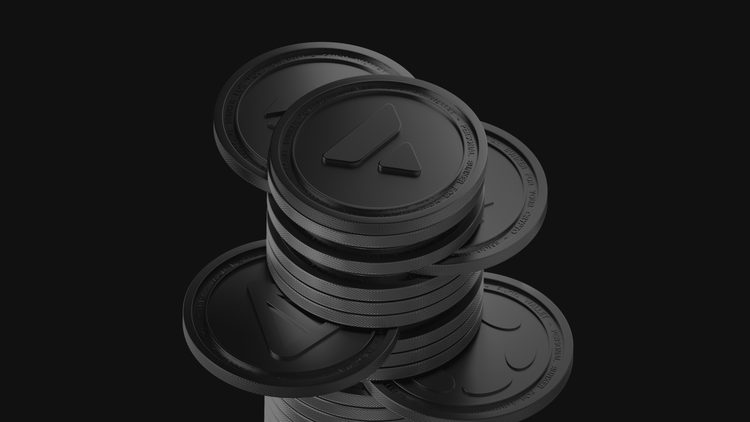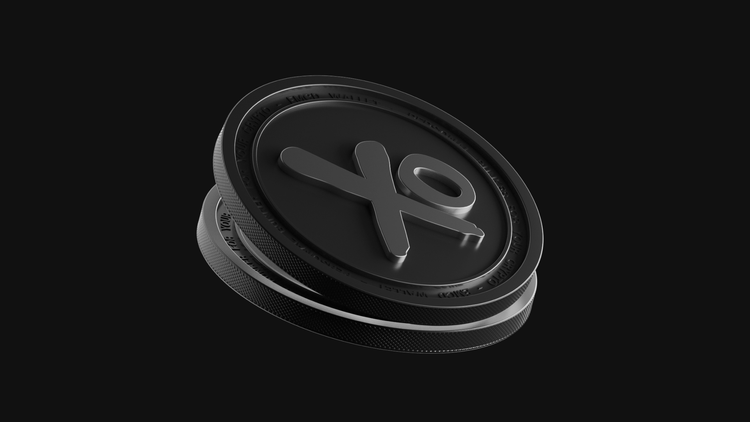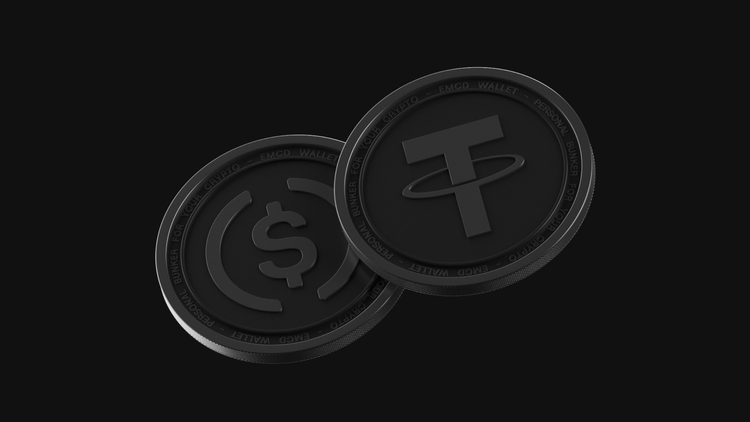Chainlink Token: What It Is, Overview, and Prospects

Investing in cryptocurrencies and related projects attracts people with the possibility of multiplying their investments— sometimes by dozens of times. In the early days of the crypto market, putting money into any available coin or project meant taking on the risk of losing the entire invested amount. Today, however, there are plenty of projects that have been around for over five years and have proven to be reliable.
Among time-tested coins, the most popular ones usually offer a product or service that brings real value to the crypto ecosystem. So, let’s look at the LINK token and the Chainlink network behind it. We’ll also touch on how LINK interacts with other cryptocurrencies and review its price movements.
If you want to start earning with LINK and other coins today, register on the EMCD platform. There you’ll find:
- a multi-currency custodial wallet that supports ERC-20 tokens
- a P2P platform for secure and profitable crypto trading
- the Coinhold investment service, offering up to 14% annual returns
- a mining pool ranked among the global top 10
- a wide range of guides and reviews on how to earn with crypto
Introduction to Chainlink
Chainlink is a decentralized network of “oracles” that launched in 2017. An oracle is a crypto service that acts as a bridge between a blockchain and the outside world. It delivers real-world data — for example, the current price of Bitcoin, weather forecasts, sports results, or news headlines — directly to a smart contract, which otherwise has no way to access this information on its own.
Smart contracts follow strict predefined rules, so without access to external data, their capabilities are limited. For instance, an oracle can tell the contract, “Bitcoin is currently worth $70,000,” allowing the smart contract to automatically trigger a payment or another action based on that information. To ensure this data is reliable, decentralized oracles like Chainlink gather information from multiple sources and verify its accuracy.
Chainlink and other oracle services are especially critical for decentralized finance (DeFi), insurance, and blockchain-based games — all of which depend on trustworthy external data. Chainlink delivers this data to smart contracts securely and reliably.
The project uses its own native token, LINK, which is required to pay for network services and to incentivize participants. LINK tokens are based on the Ethereum blockchain. Chainlink smart contracts are written in Solidity, and Chainlink Nodes are implemented in Go.
As of 2025, Chainlink supports more than 20 major blockchains and various pilot integrations, covering both main networks and Layer 2 solutions. These include:
- Ethereum
- BNB Chain
- Polygon
- Avalanche
- Arbitrum
- Optimism
- Base
- Solana (with CCIP support)
- Starknet
- zkSync
- Scroll
Chainlink History and Development
The story of Chainlink began in 2017 with the publication of its white paper, outlining a protocol and oracle network designed to enable data exchange between blockchains and the real world. That same year, the LINK token ICO raised $32 million. About 35% of the tokens were sold during the ICO, another 35% were allocated to node operators, and 30% were reserved for SmartContract.com (now Chainlink Labs) to fund further development. The initial token price was $0.11, but it quickly rose to $0.66.
Key figures behind the project include:
- Sergey Nazarov, CEO, who previously worked on other crypto projects such as SmartContract.com
- Steve Ellis, CTO, with a background at SmartContract.com and Pivotal Labs
- Ari Juels, Chief Scientist at Chainlink Labs and a professor at the Jacobs Technion-Cornell Institute
The project’s mainnet on the Ethereum blockchain was officially launched in 2019. This milestone drove a significant increase in the token’s price, which rose from $1 to around $2.40 by 2020. Following the launch, Chainlink oracles were integrated into DeFi protocols, including Synthetix and Aave.
In 2020, Chainlink introduced new services: Chainlink VRF (Verifiable Random Function) for secure random number generation and Chainlink Proof of Reserve for asset reserve verification. That year also marked the start of integrations with other blockchains such as Binance Smart Chain and Polygon. The LINK token maintained steady growth, reaching $11 by early 2021.
In 2021, Chainlink Labs acquired DECO — a privacy-preserving technology developed at Cornell Tech — and began building its own privacy solutions. That same year, the team released a second white paper outlining its vision for the role of decentralized oracle networks in smart contract ecosystems.
Fueled by investor optimism and an overall bull market, the token’s price reached an all-time high of $52.70 in May 2021. However, the pace of new technology rollouts lagged behind investor expectations, and LINK entered 2022 priced around $20.
In 2022, Chainlink introduced its staking model, allowing token holders to earn rewards by staking and helping to secure the network. The project’s list of partners grew to include major names like SWIFT, Google Cloud, Avalanche, and Base.
By 2024, practical integrations of CCIP (Cross-Chain Interoperability Protocol) became available, enabling secure data and token transfers between different blockchains.
As of mid-2025, Chainlink remains a clear leader among decentralized oracle networks. It supports protocols that account for approximately 45–55% of the total value locked (TVL) in the DeFi sector.
Despite competition from other oracle networks such as Pyth Network, Chainlink continues to expand thanks to its wide range of products — including CCIP, Data Streams, and Proof of Reserve — and increasing adoption by traditional financial institutions and government initiatives. More companies are integrating Chainlink’s oracles into their products every year.
From January 2022 to January 2024, the LINK token price mostly hovered around $8 with a brief local high of $20 and a few local lows around $6. By mid-2025, it had risen to about $14, having reached a local peak of $23 in December 2024.
How Chainlink Works: Key Principles and Technologies
Chainlink acts as a bridge between blockchains and the external world. By design, smart contracts cannot directly access off-chain data. Chainlink solves this limitation through a decentralized network of oracles — nodes that gather information from verified external sources (APIs, exchanges, sensors) and deliver it to the blockchain. To ensure accuracy, the network uses a multi-verification model. This means data is requested from multiple oracles and then cross-checked for consistency.
Core technologies powering Chainlink include:
- OCR (Off-Chain Reporting) — aggregates data off-chain and publishes a verified, consolidated result on-chain, helping to reduce transaction fees
- VRF (Verifiable Random Function) — generates provably fair random numbers, which is valuable for blockchain games and lotteries
- Proof of Reserve — provides real-time verification that a tokenized asset provider holds sufficient reserves to back issued tokens
- CCIP (Cross-Chain Interoperability Protocol) — enables secure data and token transfers between different blockchains. This technology ensures safe cross-network interactions, making Chainlink a critical piece of Web3 infrastructure. With CCIP, developers can build truly multi-chain applications
Chainlink’s growth is driven by demand for these technologies. The project solves practical problems that are crucial for DeFi, asset tokenization, and cross-chain interoperability. As a result, Chainlink’s solutions are used in a wide range of crypto ecosystems. The network’s significance is regularly highlighted by leading industry experts.
The Role of the LINK Token in the Chainlink Ecosystem
The LINK token is the core element of Chainlink’s economic system. It is used to pay for the work performed by oracles. Smart contract developers pay in LINK to access data delivered by oracles to the blockchain. For example, if an application needs to receive currency exchange rates or product prices, it must compensate the oracles. This incentivizes node operators to maintain accurate and reliable data collection mechanisms.
LINK also plays a key role in the system’s trust model. Through staking, participants lock tokens within the network to demonstrate accountability. If an oracle provides false information, it risks losing part of its staked tokens. This mechanism reduces risks and enhances the network’s reliability.
From a technical standpoint, LINK is an ERC-677 token, but many platforms treat it as an ERC-20 token, so it can be stored in any wallet supporting ERC-20 tokens, including EMCD. All tokens were pre-minted before the ICO, meaning that LINK token mining is not possible and the supply is strictly limited.
Thus, the LINK token is not just a cryptocurrency but a vital tool supporting the stability and security of the entire Chainlink ecosystem.
Where to Buy and How to Store LINK Tokens
You can buy LINK on major cryptocurrency exchanges such as Binance, Bybit, OKX, and Kraken. On most platforms, LINK trades in pairs with USDT, ETH, or BTC. To purchase LINK, simply create an account, complete verification, and fund your balance.
LINK is also available on decentralized exchanges (DEX) like Uniswap, provided you already have a secure crypto Chainlink wallet. Additionally, LINK can be bought on certain P2P platforms, including EMCD.
You can store LINK either on an exchange or in a personal wallet. Wallets like MetaMask, Trust Wallet, Exodus Wallet, or hardware wallets such as Ledger and Trezor are recommended for secure storage.
It’s best to avoid long-term storage on exchanges. It’s better to use crypto wallets that allow you to control your private keys. One popular integrated solution is the EMCD multi-currency custodial wallet with ERC-20 token support. Its benefits include:
- High levels of security and privacy
- The ability to recover access to assets if some login information is lost
- Access to a P2P platform for buying, selling, and exchanging tokens
Advantages and Disadvantages of Chainlink and the LINK Token
Key strengths that have secured Chainlink’s leadership include:
- A vast list of supported blockchains
- Collaborations with leading DeFi players like Aave and Synthetix
- Established partnerships with government and private initiatives outside the crypto sphere
- A functioning mechanism for oracle data retrieval and verification
- Transparency in data validation
- A relatively long track record and a high level of trust
- An active community
- Regular introduction of new technologies and solutions
- Opportunities to earn both through token sales and staking
- A relatively stable price for LINK, the project’s native currency
However, the project also has several drawbacks:
- Complex oracle mechanisms that are difficult to understand
- Dependence on access to external data sources
- Competition from networks like Pyth and Band Protocol
- Project governance concentrated within Chainlink Labs
- Experts do not foresee a sharp rise in LINK token price in the near future
Future Prospects for Chainlink and the LINK Token
The LINK token and the Chainlink network continue to evolve. Chainlink is building infrastructure for data transfer and interoperability, which is crucial for the further development of the decentralized internet (Web 3.0) within the crypto space. The project aims to scale CCIP — a technology that could become the standard for exchanging data and assets across different blockchains. Users and developers hope CCIP will become a universal “internet of blockchains,” uniting fragmented ecosystems.
The market also expects expansion of tools like Data Streams and Proof of Reserve. An increasing number of real-world assets (gold, real estate, bonds) are being tokenized on-chain. These assets always require transparency, verification, and independent auditing — exactly what Chainlink can provide.
Additionally, the project is anticipated to fully launch second-layer staking and new incentive mechanisms for node operators, strengthening the economy of LINK, the network’s key token. Users want to see not only price growth but also a stable role for LINK in the ecosystem — as a tool for access, trust, and participation in the network’s operation.
Chainlink Competitors Analysis
Chainlink is the leader in the decentralized oracle market, but it faces competitors with distinct strengths:
- Pyth Network — specializes in high-frequency financial data and is actively developing within the Solana ecosystem
- Band Protocol — stands out for its simpler architecture and lower fees, attracting projects on Binance Smart Chain and other networks
- Witnet and API3 — focus on transparency and decentralization
Despite the competition, Chainlink maintains its leadership thanks to its vast ecosystem, proven technologies like OCR and CCIP, and numerous integrations. While competitors grow in specific niches, Chainlink remains a versatile solution for a wide range of blockchains and applications.
Expert Opinions on the Future of Chainlink and the LINK Token
Given the growth trends in 2025, analysts predict that Chainlink will continue strengthening its position as the standard for decentralized oracles and cross-chain interoperability. Further expansion of partnerships and integrations is expected, especially in the tokenization of real-world assets and traditional finance.
However, most experts believe that Chainlink’s development will have only a modest impact on the LINK token price. Moderate growth without sharp spikes up or down is anticipated, considering the market’s maturity and strong competition. Still, successful implementation of new technologies and large-scale partnerships could lead to more significant price movements. Experts plan to provide clearer price forecasts after the anticipated release of an updated project roadmap.
Is Investing in Chainlink Worth It in 2025?
In 2025, Chainlink remains one of the most stable and technologically advanced projects in decentralized oracles. Investing in LINK may appeal to those who believe in the growth of Web3 infrastructure and cross-chain interoperability. However, rapid price surges are unlikely due to high competition and a mature market. A long-term investment strategy is recommended, focusing on the project’s technological value and steady ecosystem expansion.
FAQ
What is the LINK token and what is it used for?
LINK is the cryptocurrency of the Chainlink network, used to pay for oracle services and to incentivize node operators. It ensures secure and reliable data transmission to the blockchain through staking and economic incentives.
Is it safe to invest in Chainlink?
Experts consider Chainlink one of the most reliable projects in the crypto industry due to its proven technologies and long track record. However, like any investment, risks cannot be completely eliminated. Competition and technical complexity remain challenges. The usual rule applies—never invest more than you are willing to lose.
How can you earn with the LINK token?
You can earn by selling LINK when its price rises. Another option is staking — locking tokens in network nodes to earn passive income. Generally, selling tokens after price appreciation can yield higher profits than staking.
What risks are associated with Chainlink?
Main risks include competition from other oracles, technical complexity for new users, and centralized project governance by Chainlink Labs. Rapid price growth is unlikely, which may limit short-term investment gains.
Where is the best place to store LINK tokens?
LINK is best stored in personal ERC-20 compatible wallets like MetaMask or Trust Wallet. Hardware wallets such as Ledger and Trezor provide even higher security. For convenience and extra protection, a multi-currency custodial wallet like EMCD can also be used.
How is Chainlink different from other oracles?
Chainlink stands out with support for over 20 major blockchains and various pilot integrations, proven OCR and CCIP technologies, and numerous integrations with DeFi projects and traditional finance. It is a universal, scalable solution with a robust ecosystem. Most competitors focus on specific niches — for example, Pyth Network specializes in high-frequency data.




